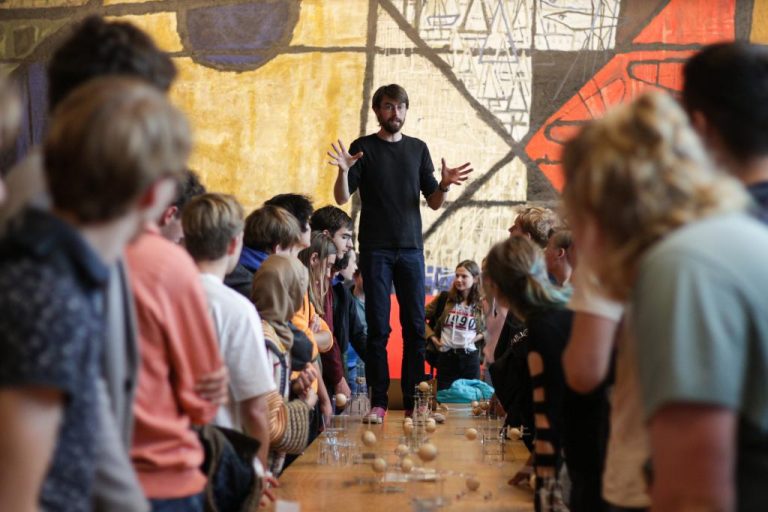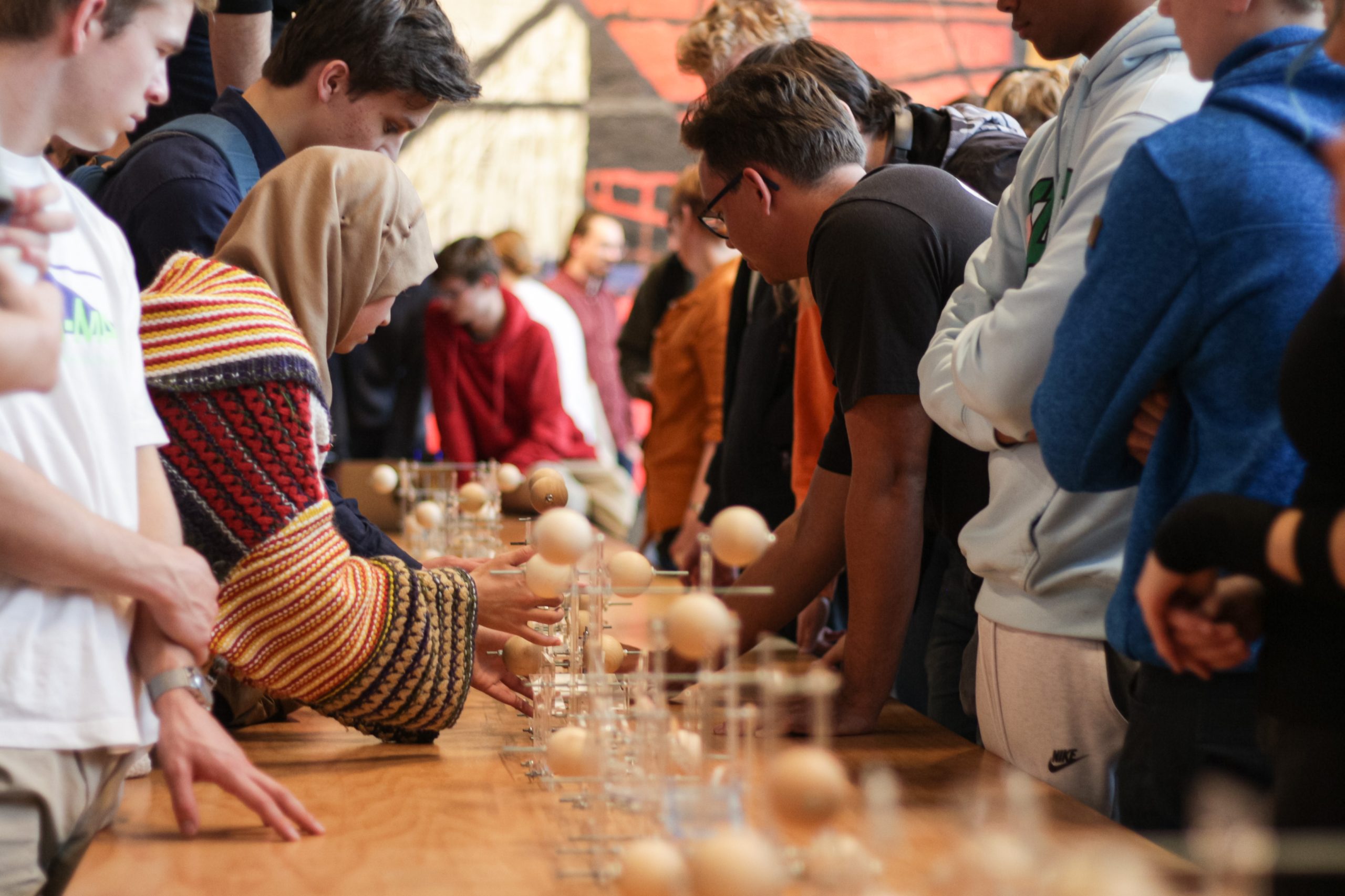To conclude the first quarter, first-year mechanical engineering students test marble machines that have to connect to two others. This went better than ever this year.
On the long table, student teams of five to seven members are getting ready to trigger their machines. (Photo: Justyna Botor)
At the end of the long corridor connecting the lecture halls in the 3mE building, more than 100 students are densely packed around a long row of tables. In other parts of the hall, students who are already finished are busy unscrewing their marble machines. The plastic parts go into a large bin; the bolts, nuts and washers are neatly returned to their compartments.
On the long table, student teams of five to seven members are getting ready to trigger their machines. Soon a wooden marble will roll into the machine at a height of 10 cm; it must bridge a minimum distance after which the marble rolls on to the next machine. The energy is provided by the weight of two wooden marbles moving from high to low. A maximum of 32 marble machines are set up in a line. When the marble starts rolling, it has to pass through as many machines as possible without faltering or derailing. Will it make it to the end?
Professor Bob van Vliet walks on top of the table among the students and past the marble machines. He gestures for silence. The students watch tensely. The hour of truth is dawning. There is supreme concentration as Van Vliet’s colleague Giuseppe Radaelli rolls the wooden marble into the first machine. And then things start spinning. All kinds of different mechanisms guide the marble over the obstacle course, one step at a time. The longer it goes well, the more the tension rises. A few metres before the end, things still go wrong. A massive ‘aaaaahhh’ sounds as the marble derails and bounces on the table.
“A new record,” Van Vliet exclaims cheerfully. “Twenty-four. Last year we didn’t get beyond 21.”

Lercturer Bob van Vliet opts for collaboration in the first quarter. (Photo: Justyna Botor)
Collaboration
Lecturers Bob van Vliet, Giuseppe Radaelli and Regine Vroom are not teaching this preliminary design course for mechanical engineering students for the first time. Plus a team of project teachers and instructors assists them. They teach some 800 freshmen, divided into 128 groups, how to make a preliminary design project in eight weeks: build a mechanical machine that does what you have conceived. That requires balancing between freedom and complexity, and between collaboration and competition.
The assignment and the materials are the same for all of the groups, but the elaboration is always different. Vroom sees four solutions often repeating in all kinds of variations: “seesaw, hammer, a wheel or a four-bar linkage.”
All of the machines that compete in one of the four final sessions are improved designs. In week 6, all groups have to make and analyse a prototype, according to Vroom. Two weeks later, there will be a new improved design. That helps to make the chain of successful marble machines as long as possible.
Van Vliet opts for collaboration in the first quarter: working together to create the longest possible chain of working marble machines. But by the end of the first year, competition will prevail. Then the famous design competition will ignite a mutual battle between the student teams.
Do you have a question or comment about this article?
j.w.wassink@tudelft.nl


Comments are closed.